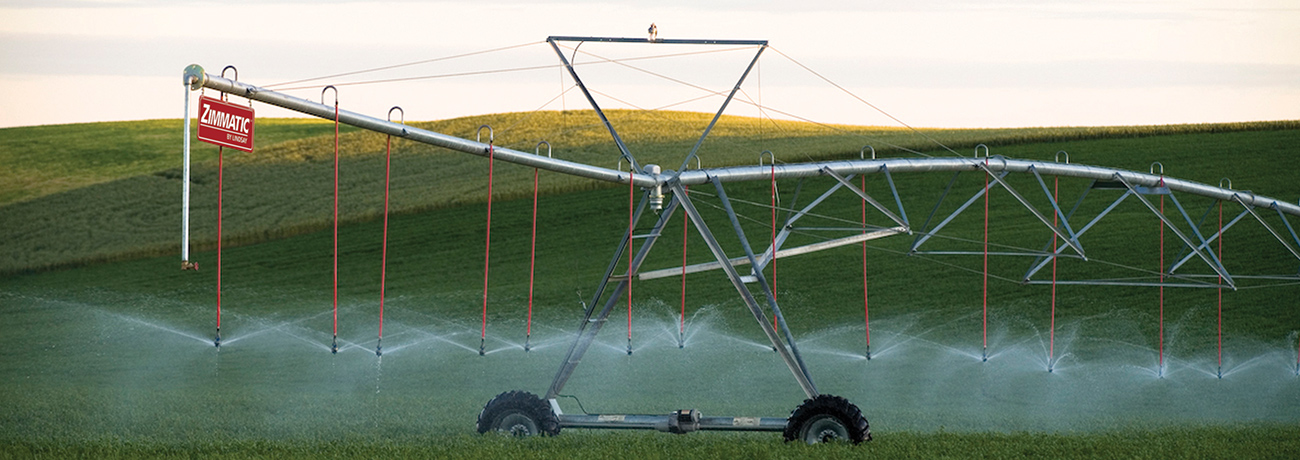Zimmatic Blog
Q&A: Your Top Questions About Irrigation This Season
May 31, 2023

It's growing season – and water is on every grower’s mind. Are you considering adopting pivot irrigation? Maybe curious about ways to make your irrigation operation more effective? Many growers have similar questions this time of year, so we’re taking the opportunity to provide answers to some of the most commonly asked questions.
How can pivot irrigation improve my crop yield?
Unlike other methods of irrigation such as flood irrigation, pivot irrigation allows for more efficient use of water in a uniform, highly targeted, easily adjustable way. Instead of flooding an entire field and letting water pool, you can control just how much water goes through every sprinkler. If you see a dry patch, you can easily give it a little extra water. Likewise, if soil looks over-hydrated, you can skip it entirely
Growers can also grow multiple crop types in a single pivot circle, adjusting the irrigation schedule as necessary for each. Or, since you no longer need furrows, rotate close-seeded crops like wheat or alfalfa. This maximizes use of land and ensures efficient watering over all of it.
Pivot irrigation also helps you get the most out of your fertilizer, which comes in especially handy when fertilizer is at a premium. Since irrigation can be carefully scheduled and targeted, you won’t need as much fertilizer overall. Plus, pivots make fertigation possible. Rather than watering and then fertilizing, you can spread fertilizer via the irrigation system itself. Not only does this save time, it also ensures your fertilizer use is more targeted.
Plus, technology such as Zimmatic™ Variable Rate Irrigation (VRI) and FieldNET™ Advisor can work directly with your pivots to schedule irrigation at exactly the right times and amounts. The end result: happier plants and higher yields.
When should I water my crops?
This is a big question—far bigger than we can cover in one blog post. But let’s cover two of the most common factors here, both of which can be analyzed and accounted for via FieldNET Advisor™.
The first is soil moisture. You should always know your soil moisture levels so you can compare them against the needs of each crop. This used to be a labor-intensive, in-the-field process, but now it can be as simple as checking an app. Monitor your soil health and tailor your irrigation schedule accordingly; your plants will thank you for it.
The next is weather patterns. When did it rain last? When is it going to rain again? What is the daily weather forecast? Your irrigation needs can change on a dime (just ask the Oschners over at Double O Farms) depending on the weather you encounter, so keep an eye on the sky – and, better yet, the app – and adjust accordingly.
In all cases, with FieldNET Advisor, you can analyze the many factors and get daily irrigation recommendations. Your local Zimmatic dealer can help you set it up.
Do you have any irrigation tips for especially hot days?
Growers should consider how their crops and soil type affect water needs. For example, corn needs more moisture than wheat; sandy soil holds water differently than silt- or clay-heavy soil. Calculate your needs based on both. Pivot irrigation comes in handy here—it will help you minimize runoff, evaporation and other forms of water loss. More targeting means less runoff, so you’ll keep thirsty plants hydrated without wasting water or drowning them.
Growers will also benefit from watering as low to the ground as possible, doing their irrigation earlier in the day and monitoring soil moisture levels. All three steps reduce how much water you lose to evaporation or use to rehydrate soil. The lower the sprinkler, the less distance water has to travel to soak into the soil. Irrigating early gives the water more time before it evaporates in the hot sun. And carefully monitoring soil moisture levels lets you target the driest patches directly, rather than blasting your entire field.
How do I maximize the life of my machine?
Just like any piece of equipment, the better you treat your pivots, the better they’ll treat you (or in this case, your crops). A big part of this is seasonal maintenance; for example, make sure to check your pivots before growing season starts and winterize them before cold sets in. In general, keep an eye on the machine’s condition and components. When did you last check to make sure there’s no water in your gearboxes? Have you greased the pivot point? Nothing hurts a machine quite as much as inattention. Even something as simple as rodents getting inside can severely impact functionality.
To make your life easier, you can also look for solutions that reduce your need for maintenance. Zimmatic pivots are highly durable, and other products—such as Zimmatic’s unique NFTrax airless wheels—are built to address common failure points.
Irrigation is a big topic. Still have more questions? You can always ask your local dealer for advice and information—and you can stay even more informed by reading our blog. It has in-depth articles, deep dives and interviews with growers and dealers alike. Check it out—your crops will thank you!